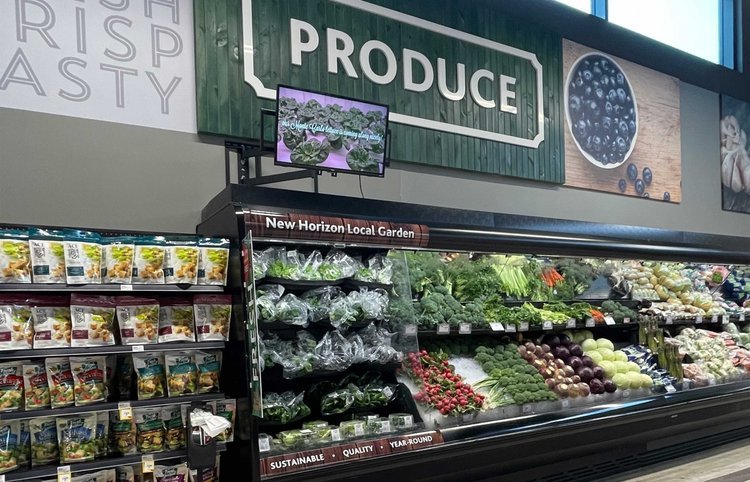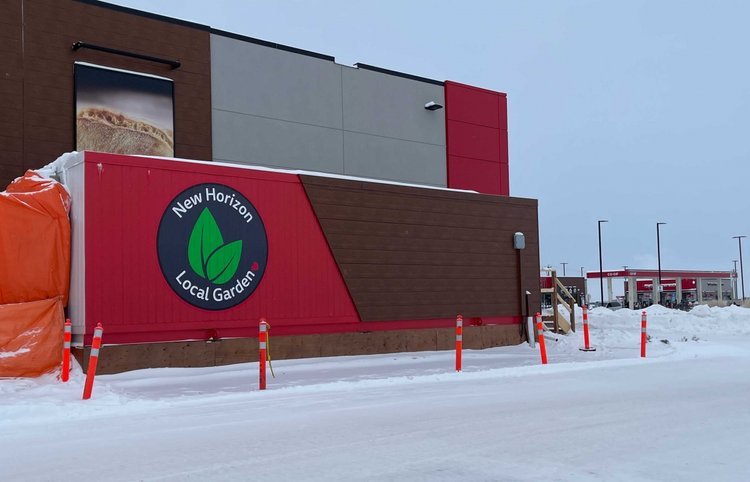What's The ROI on Vertical Farming?
How do you know you will be growing enough produce for a commercial operation?
Let’s cut to the chase - size matters.
When it comes to produce, especially leafy greens, a small-sized product isn’t very marketable. A yield is the total number of greens you grow by unit, but this number can also be massaged to look more favorable or less favorable.
For example, if I told you that every week I produced 650 heads of lettuce you would think, wow that’s a lot . . . right? But what if I told you those 650 heads only fill one crate? Those are some small lettuce heads.
That’s why higher yields do not always correlate with better yields. And moreover, don’t measure up to commercial yields. Think of the last time you shopped at your local grocer for lettuce. Which heads do you look at first? The big, healthy-looking ones. It’s the age-old argument of quality over quantity. And your customers (and retailers) care about quality, not just how many units you can move.
The myth of more
Like we said, higher yields do not always correlate with better yields.
A high number could hide:
Small plant sizes not suitable for commercial distribution
Quality that doesn’t meet marketable standards
Uneven crop sizes throughout the farm leading to an unevenly-sized delivery to the consumer
There’s nothing wrong with smaller plant sizes. If you’re selling direct-to-consumer, you can play up the marketing aspect and sell smaller “twin packs” with one green lettuce and one red lettuce. But this will directly impact your bottom line by needing to sell a constant “2 for 1” deal.
However, if you plan to sell to commercial distributors (grocery stores, institutions, restaurants), you need your product to meet their requirements and standards. If you’re growing for your community, you want to produce food as efficiently as possible and feed people with a higher quality product.
What is commercial sized produce?
Commercial sized produce meets the minimum requirements of larger distributors like grocery stores or restaurants.
For example, in centimeters and grams, the target market size for a head of lettuce is around 10cm to 11cm with a weight of 80g to 90g+ per head.
Some “local product” programs will have different guidelines, but every retailer can see if your produce is small and not filling out your packaging, or not visually competing with its imported and less sustainably produced counterparts. They might buy from you at the beginning, but they will not buy from you for long.
Think about who you’re growing for. If you’re undecided and want to keep your options open, opt for a modular farm solution that can grow marketable products from day one.
How big is Growcer grown produce?
On average, a head of lettuce from Growcer is 14-19 cm in diameter and weighing in the range of 93g - 122g, which comfortably meets the minimum commercial requirements.
Many of our customers sell directly to local grocery stores, are local grocery stores themselves, or fulfill larger institutional orders.
A big harvest of win-win choi, an asian green that’s great in stir fries and soups, by Squamish Nation (left) and Growcer’s R&D team (right).
Grower stories
Norway House Cree Nation - Feeding a school
In Norway House Cree Nation, Life Water Gardens (Pimâtisiwin Nipî Kistikânihk) delivers their Growcer-grown harvest to the local school who is their largest customer.
The local school has 1,500 students, a vast majority of which are Indigenous. Students are able to visit the cafeteria starting in grade 6, and older students in grades 9 and up help in the cafeteria occasionally preparing salads, sandwiches, soups, and other meals.
“We need to introduce this [healthy eating] at that age or even younger . . . and the chef there is really happy with our produce . . . if you can see it, it speaks for itself,” says Virginia Muswagon, one of the co-managers of Life Water Gardens.
“I’ve been nothing but pleased,” says Kyle Mohr, the culinary arts instructor at the Helen Betty Osborne school. “Virginia is a wonderful role model for the community getting a business up and running.”
The locally grown produce also stays fresher for longer compared to the waterlogged produce they’ve seen before.
If there’s any extra produce, it doesn’t go to waste. For example, any extra spinach is steamed off and vacuum sealed to be used by home economics classes to make spinach dip, soup, and quiches.
New Horizon Co-op - From parking lot to produce aisle
In Grande Prairie, Alberta, where temperatures regularly dip to -40’C in the wintertime, New Horizon Co-op grows fresh produce steps away from their produce aisle.
By growing locally, New Horizon Co-op improves their supply chain resiliency while offering customers a superior product.
The effort also increases employee engagement, involving store workers directly in the process of planting and growing produce and getting it onto store shelves.
Lead grower Shelley worked for New Horizon Co-op for 11 years before taking on the new adventure of growing food for the store — and she’s embracing the challenge.
“Having the harvest going onto the shelf was a fantastic feeling for me, and going from the little seeds to now being able to purchase it for my family was amazing,” Shelley says.
Verdures Dorey - From farm to store shelves
Audrey Turgeon and Dominic Godin run a small dairy farm that they diversified with a Growcer farm in 2021. The couple sell what they grow directly to customers under the “Verdures Dorey'' brand and partner with nearby stores such as Le Compthé in Compton and Legufruits in Coaticook.
The produce travels less than 35 kilometres to reach store shelves and even less to reach their produce subscribers. Local customers are happy to choose the more sustainable, tastier option grown locally.
During #Lettucegate (when low supply resulted in the price of lettuce quadrupling in Canada), Verdures Dorey completely sold out all their harvests, writing,
"We are adjusting to the growing demand . . . unfortunately the farm stand will be closed tonight as we are out of produce. Thank you very much for your constant interest."
They received fresh interest from more local restaurants and retailers in their area looking for a new supply of lettuce during a time of uncertainty.
Why commercial yields matter
You want to be growing enough food, both in quantity and quality.
So, do you go for the highest number or do you go with verified, marketable yields and a network of growers to back it up?











